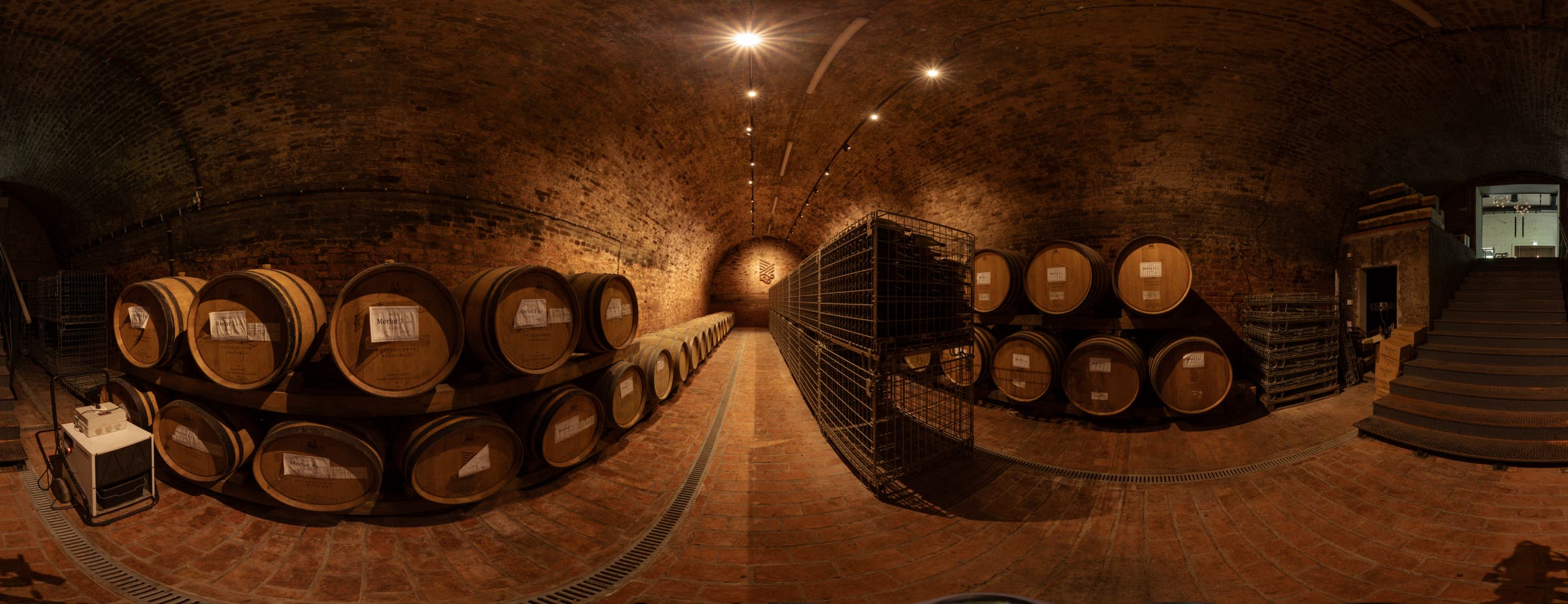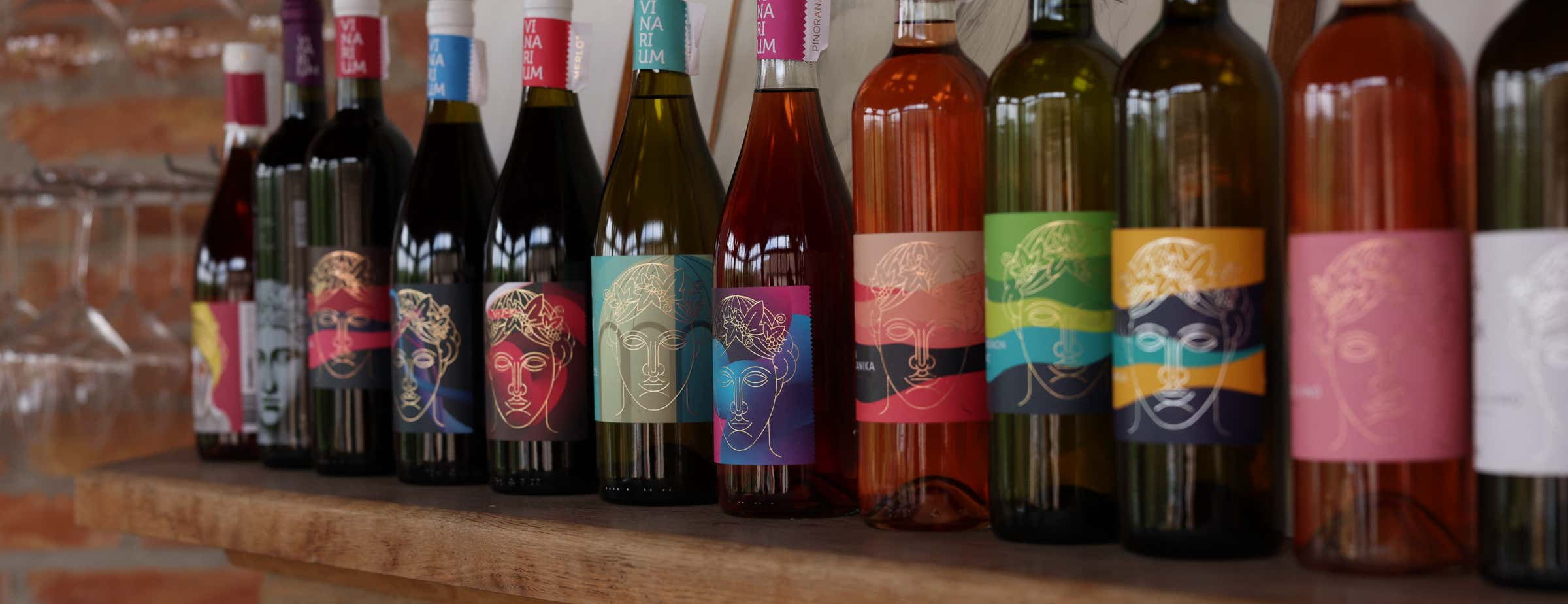Please click on the picture above to start the 360° panoramic tour. The tour consists of multiple locations. To navigate between locations, you can click the arrows pointing to the next location. At each location, you can change the viewpoint by either using the below buttons or click-and-drag. On the right hand-side, an information bar is available for each location giving general information and optional further details on specific shown elements.

Banoštor, Vojvodina, Serbia
summer, autumn, afternoon (sunset)
bus no. 78,79,81,82,83,84,86 to Novi Sad
9.00-17.00 h
Dunavska 5
Banoštor
Serbia
phone: +38121 6613 500, +381 64 8890 023
mail: info@fruvin.com
2006
visit to vineyards, visit to winery, wine tasting, organization of team-building and small celebrations
wine hills, sunset, view of the Danube, other smaller wineries, fortress, chard and ferry ride
The cultivation of vines and the production of wine in Srem and Fruška Gora are among the oldest in Europe. The ancient writers Strabo and Dion recorded that the Illyrians cultivated vines in the Pannonian Plain, and therefore also in Srem. Nevertheless, the flourishing of viticulture in these regions, and its beginnings, are associated with the ancient Romans. Emperor Marko Aurelius Probus (232 – 282 AD) abolished the nearly two-century-long ban on wine production in the Roman provinces, and planted the first vines in these areas in the vicinity of the villages of Divoš and Grgurevci, not far from Sirmium (today's Sremska Mitrovica). There are still remains of buildings and cellars in those places. Historical data say that the first vine was brought from the south of the Apennine peninsula, more than 1700 years ago.
During the 7th century, these regions were inhabited by Slavs, they got acquainted with the way of growing vines and enjoyed the benefits of wine production. After the Battle of Kosovo in 1389, and the invasion of the Turks on the Balkan peninsula, the Serbian population began to move to the north. The people, nobility and clergy who settled in Srem also brought their experience in wine production. They are responsible for the change of grape varieties on Fruško Gora. Instead of white, red varieties, brought from the south, soon began to dominate.
Unfortunately, the Turkish conquests of these areas at the beginning of the 16th century led to the stagnation of grape and wine production. A Turkish travel writer, geographer and historian noted that in Sremski Sandčak there are hills covered with fertile vineyards.
With the Peace of Karlovac from 1699, Srem and Banat became part of the Habsburg Monarchy. Viticulture is experiencing a new boom, the area under vineyards is increasing, and the wines from Fruška Gora, especially Bermet and Ausbruh, are becoming appreciated in Europe.
Zaharije Orfelin published a book in Vienna in 1783 under the title "Experienced Cellarer". This kind of encyclopedia of winemaking collected all the knowledge of the time about making Fruška Gora wines, as well as French, Italian and German wines.
The Archimandrite of Rakovac Monastery, Prokopie Bolić, published in Buda, in 1816, the book "Soveršen Vinodeleac", which is considered valuable because it described in detail 35 varieties of grapes, which were then grown on Fruška Gora. For each variety, he defined its folk name, gave a botanical description and economic and technical characteristics. And he systematized his personal experiences and knowledge acquired in the monastery vineyards and cellars.
The appearance of phylloxera, which destroyed vineyards in Europe, did not escape Srem. Phylloxera appeared here in 1881 and by 1890 all the old vineyards of Fruško Gora were destroyed. The renovation and recovery of the vineyard lasted almost 30 years.

All information in touristic organization in Novi Sad.
Near is čarda (Fish restaurant) Atos, and in the center of Banoštor there are a few traditional restaurans.
If you are coming from the direction of Novi Sad, towards Ilok about 25 km
The nearest airports are Belgrade 115 km, or Osijek (Croatia) about 120 km.
Wear comfortable warm clothes and shoes - very warm in winter, summer, Use non-slip shoes.
It is allowed to take pictures without flash.
Use your smartphone or tablet for the multimedia guide that you received from the Tourist Organization of Novi Sad.
Sremska Mitrovica - imperial palace from the Roman era
Petrovaradin - Petrovaradin fortress built in the time of Maria Theresa
Novi Sad - the capital of the Autonomous Province of Vojvodina, the administrative and cultural center. Chosen for European Youth Capital - 2019, and European Capital of Culture in 2022
Thanks to the abundance of rivers, the Danube, the Sava, the Yew, the Bosut... the wetlands where there is an abundance of different birds.
You can visit only alone.
Fruška gora is very specific, it has 17 living Orthodox monasteries, a wealth of flora and fauna, lakes, and a large number of wineries.
EUCAAP is the abbreviation of the name of the non-governmental organization European Cluster of Alps Adria Pannonia, which deals with adult education in various sectors such as sustainable development, renewable energy sources, organic agriculture, eco, ethno agro-tourism.
Funded by the European Union. Views and opinions expressed are however those of the author(s) only and do not necessarily reflect those of the European Union or the European Education and Culture Executive Agency (EACEA). Neither the European Union nor EACEA can be held responsible for them.